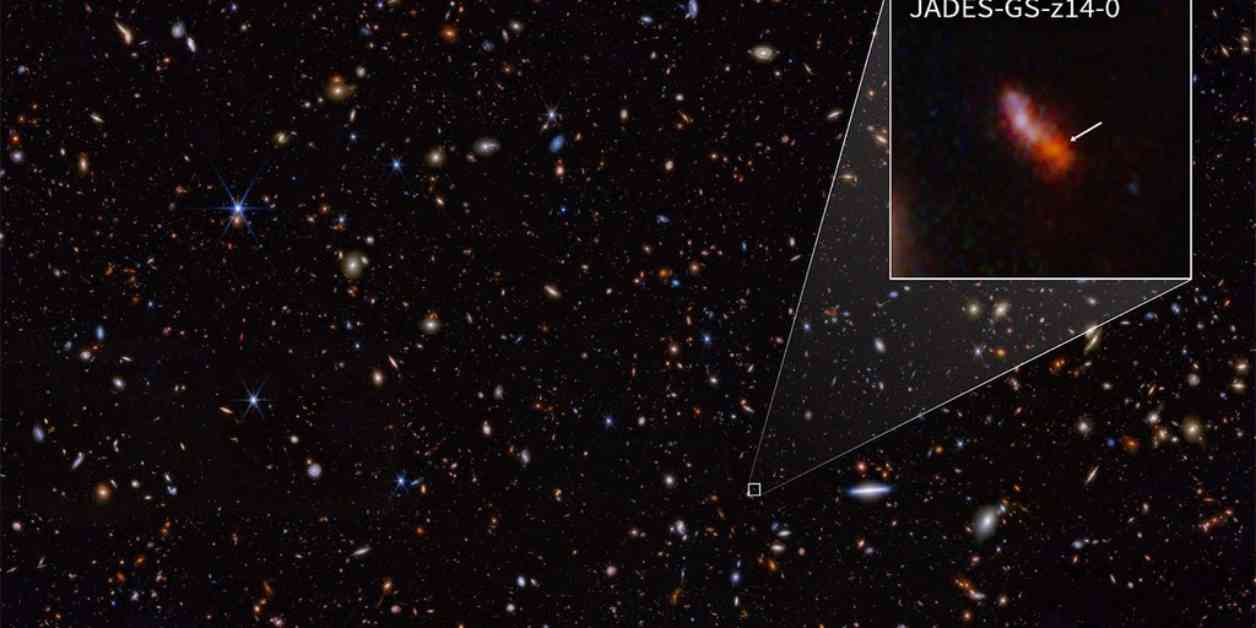The James Webb Space Telescope (JWST) has recently made a significant discovery by capturing what scientists believe is the most distant known galaxy. This discovery comes after observing what astronomers refer to as a “Cosmic Dawn” for the past two years. According to NASA, a “Cosmic Dawn” is the period in the first few hundred million years after the big bang when the first galaxies were formed. Studying these galaxies provides valuable insights into how gas, stars, and black holes evolved during the early stages of the universe.
A team of international astronomers utilized the Webb telescope as part of the JWST Advanced Deep Extragalactic Survey (JAMES) program in October 2023 and January 2024. They focused on observing galaxies to gain a better understanding of the universe’s infancy. The astronomers collected a spectrum of a galaxy known as JADES-GS-z14-0, which dates back to less than 300 million years after the big bang. This galaxy’s redshift was measured to be around 14, indicating its extreme distance from Earth.
The astronomers, Stefano Carniani from Scuola Normale Superiore in Pisa, Italy, and Kevin Hainline from the University of Arizona, shared that the galaxy was observed for nearly 10 hours using Webb’s Near-Infrared Spectrograph (NIRSpec). The team was thrilled by the discovery as this galaxy shattered the record for the most distant known galaxy. The galaxy’s luminosity from such a great distance was particularly intriguing, suggesting that it contains young stars rather than a growing supermassive black hole.
Further analysis using Webb’s Mid-Infrared Instrument (MIRI) revealed that the galaxy’s brightness exceeded expectations, indicating the presence of ionized gas emission from hydrogen and oxygen. The astronomers noted that the observation of oxygen at such an early stage suggests the existence of multiple generations of massive stars in the galaxy’s history. Additionally, the galaxy’s color was reddened by dust, providing valuable insights into its composition and evolution.
The astronomers emphasized that the galaxy, JADES-GS-z14-0, does not align with theoretical predictions of early universe galaxies. They expressed excitement about the diverse range of galaxies observed during Cosmic Dawn and anticipate discovering more luminous galaxies with Webb in the coming years. While the findings are still under review, the implications of this discovery are significant for our understanding of early galaxy formation.
The James Webb Space Telescope, a joint project of NASA and the European Space Agency, continues to push boundaries in space exploration. As the successor to the Hubble telescope, Webb’s capabilities offer unprecedented opportunities to study the universe’s origins and evolution. The recent discovery of the most distant galaxy showcases the telescope’s remarkable potential for unraveling cosmic mysteries and expanding our knowledge of the cosmos.




